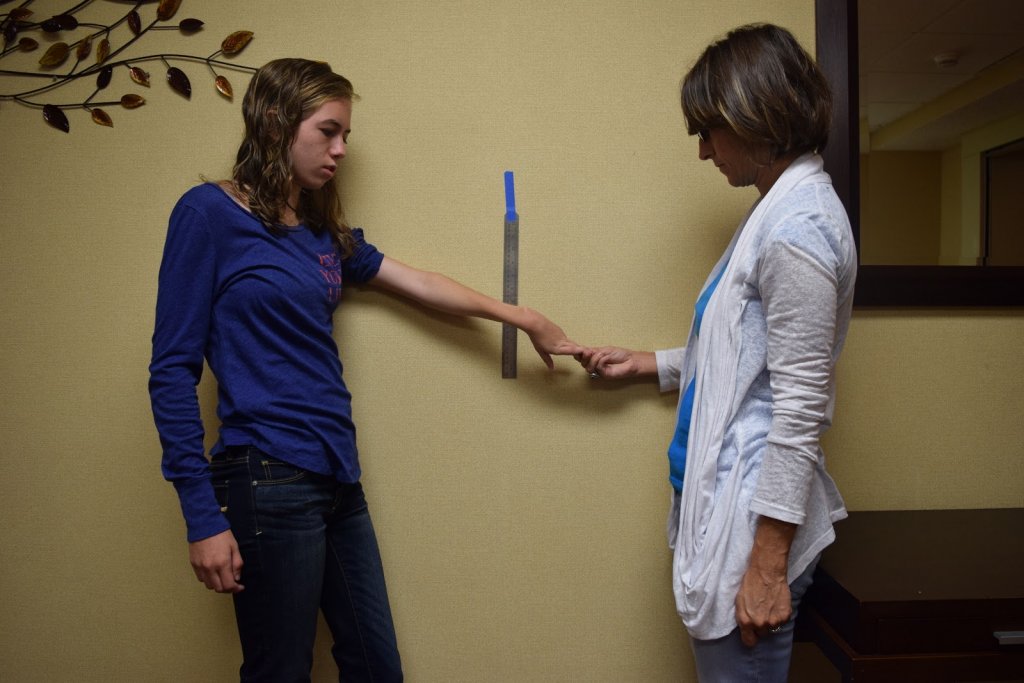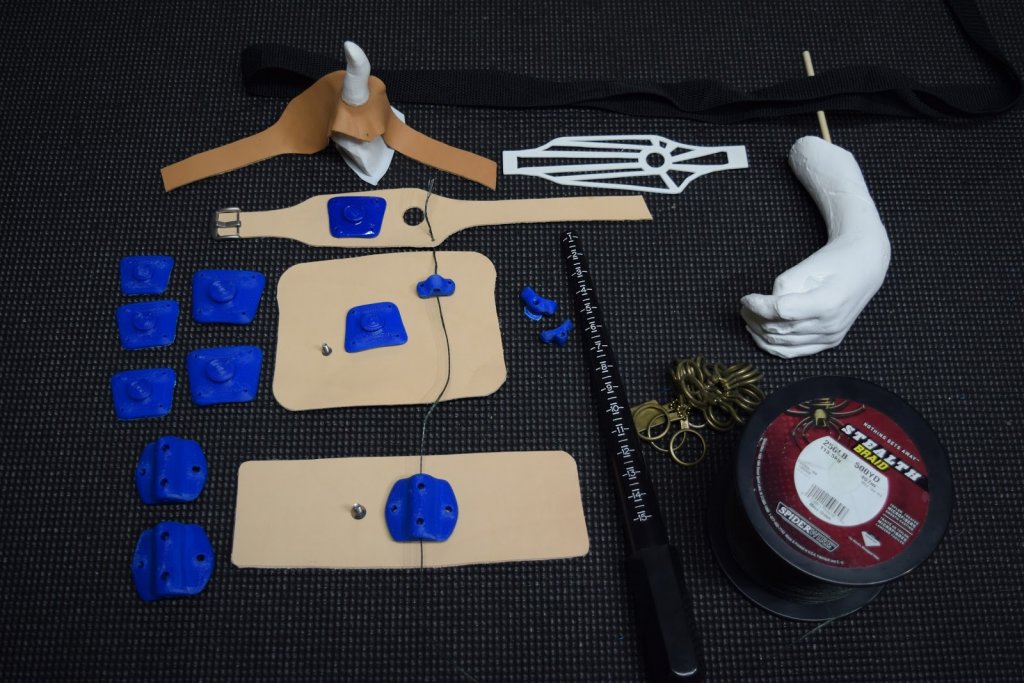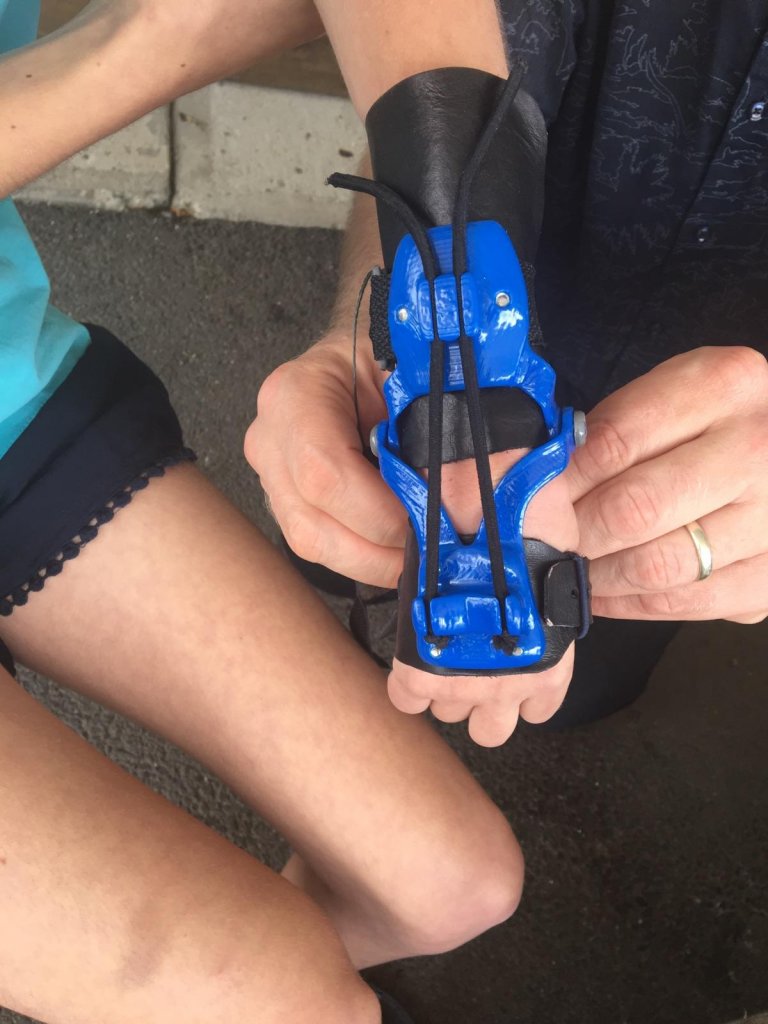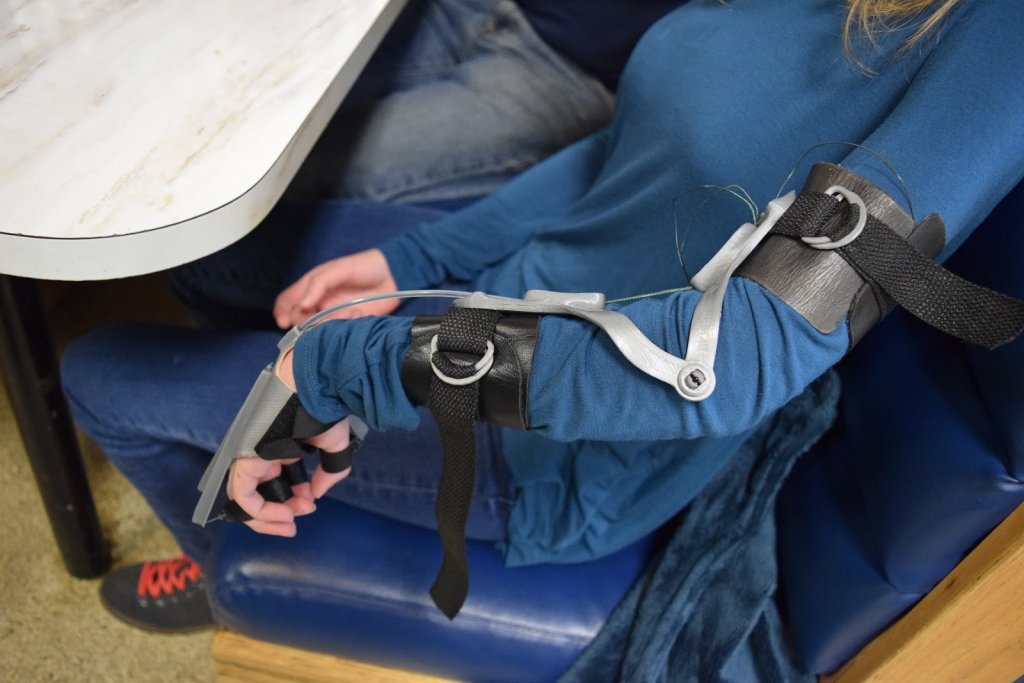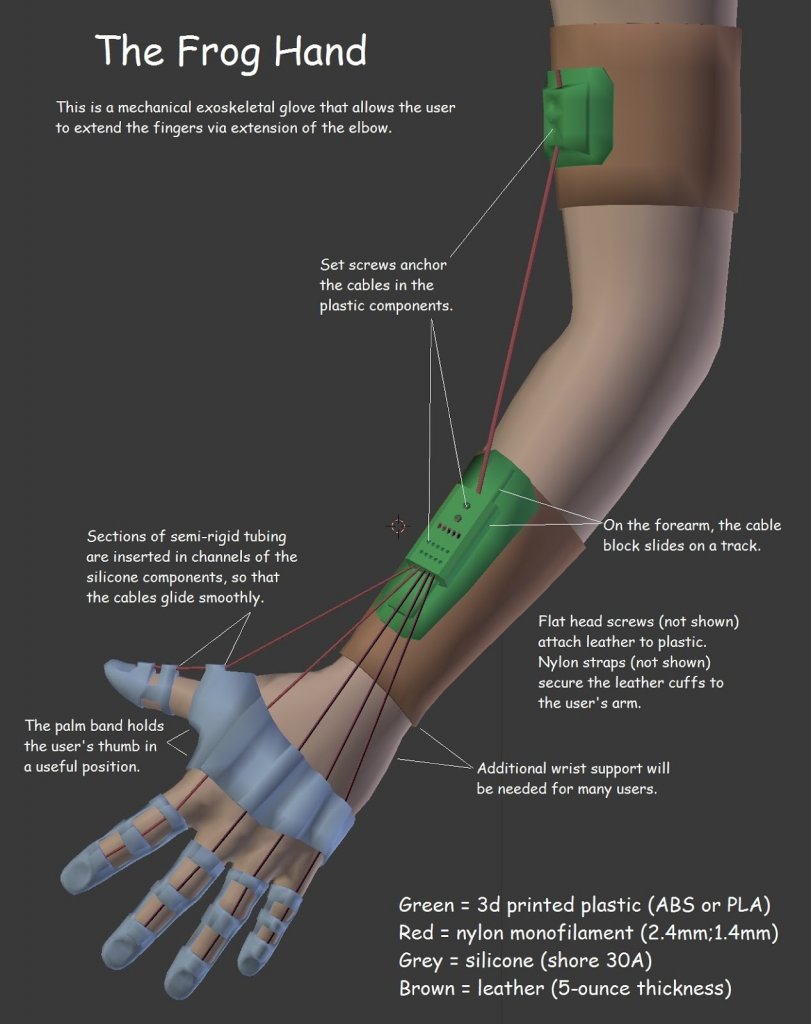While there is always the question of whether life imitates art, or vice versa, science and innovation today often imitate nature—and we humans seem to be getting better at it. A recent case and point involve a new e-NABLE prosthetic called the Frog Arm, developed by e-NABLE designer and volunteer, Peter Binkley.
 Most of us take the ability to open our hands and flex our fingers completely for granted. For kids with severe epilepsy who have undergone difficult treatments, however, this can be impossible.
Most of us take the ability to open our hands and flex our fingers completely for granted. For kids with severe epilepsy who have undergone difficult treatments, however, this can be impossible.
Upon discovering the enormous challenges kids with epilepsy face, Binkley began working with the Brain Recovery Project to create a functional limb replacement for children dealing with life after hemispherectomies—a surgery removing a portion of the brain’s hemisphere to help prevent dangerous seizures.
“In early 2016, I was approached by the Brain Recovery Project. They wanted me to pick up on Elizabeth Jackson’s amazing Airy Arm project. Elizabeth created a wearable arm that allowed a user to open his paralyzed fingers. They wanted something with a similar action. That is, a wearable device that opens the fingers via an extension of the elbow. The BRP wanted me to design a more low-profile, easy-to-wear solution. In September, I began sketching ideas for the Frog Arm,” states Binkley.
“Frog Hand (Frog Arm 0.1) would have been too difficult to manufacture. And I hadn’t even met a test pilot for the device yet, so I had a lot to learn.”
He met with his ‘test subject’ Cameron a few times, noting her exceptional social and academic skills despite the extreme medical treatments she had to endure. Soon after taking measurements and considering the level of functionality required in the prosthetic, Binkley created a 3D printed prototype accentuated with leather, screws, and a variety of cables:
“I was trying to make a device that could give users control of the wrist. With paralyzed tendons, flexing the wrist extends the fingers and extending the wrist flexes the fingers. I was trying to use that biomechanical fact to advantage. Large hair elastics hold the wrist in extension, so the normal position of the hand is closed. When the user extends the elbow, it pulls a cable that flexes the wrist, thereby opening the fingers.”
Numerous iterations were required for version 0.2, so Binkley moved on to the Frog Arm 0.3, using a 3D model and 3D printed forming blocks for better hinge design. He was forced to keep on editing his designs though, moving from 0.3 to 0.4 quickly also:
“The leap from version 0.3 to 0.4 was a big one. I had to attach directly to the fingers somehow. It seemed to me that Cameron’s only needed to be able to actively open her fingers, since they close on their own and remain closed at rest,” said Binkley.
Binkley used an elbow hinge for manipulating the cable, along with nylon tubing to serve as a braking system—allowing the fingers to move ‘relative to the carpals but not bound to the forearm.’ Leather cots made of distressed goat hide were placed around the fingers also. The forearm was not a good fit, however, and Binkley forged ahead to version 0.5.
While Cameron continued to have issues with finger extension due to such long-term paralysis, Binkley decided to discourage regular wear of the device for her due to fear of physical damage. He is continuing to work with another test pilot though, and his experimental open-source design has been released for the Frog Arm on Thingiverse.
e-NABLE has made a huge impact around the world in creating prosthetics for individuals of all ages in need of limb replacement. While these medical devices are meant to add to the quality of life for patients, many of the designs are spectacular—from those meant to help kids play violin to integrating complex features like parametrics, and even adding to veterinary medicine with bird prosthetics.
What do you think of this news? Let us know your thoughts! Join the discussion of this and other 3D printing topics at 3DPrintBoard.com.
[Source / Images: Enabling the Future]Subscribe to Our Email Newsletter
Stay up-to-date on all the latest news from the 3D printing industry and receive information and offers from third party vendors.
You May Also Like
Precision at the Microscale: UK Researchers Advance Medical Devices with BMF’s 3D Printing Tech
University of Nottingham researchers are using Boston Micro Fabrication‘s (BMF) 3D printing technology to develop medical devices that improve compatibility with human tissue. Funded by a UK grant, this project...
GaeaStar and Verve Coffee Roasters Start Pilot Production of Sustainable 3D Printed Coffee Cups
Following a 2022 debut in Germany, GaeaStar, a startup based in San Francisco and Berlin, has begun US pilot production of its sustainable, disposable clay cups and bowls made with...
Meltio and Accufacture Unveil Robotic Metal 3D Printer Made in the US
Meltio has partnered with Michigan-based robotics firm Accufacture to introduce Alchemist 1, a robotic cell designed for wire-laser metal 3D printing made in the US. This new system represents a...
WASP Highlights Advances in Healthcare 3D Printing at Italy’s Exposanità 2024
WASP takes center stage at Italy’s leading healthcare expo, Exposanità 2024, demonstrating the transformative impact of its advanced 3D printing technologies on the medical sector. Known for its line of...


